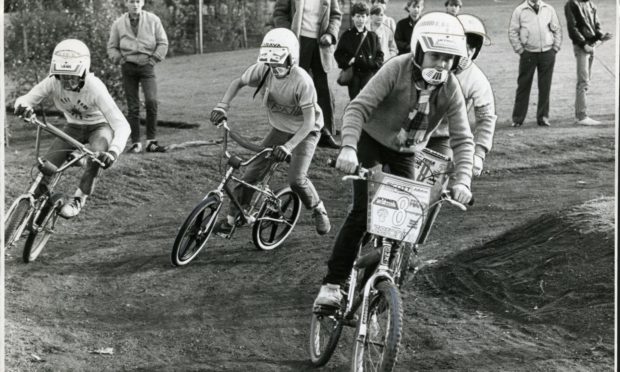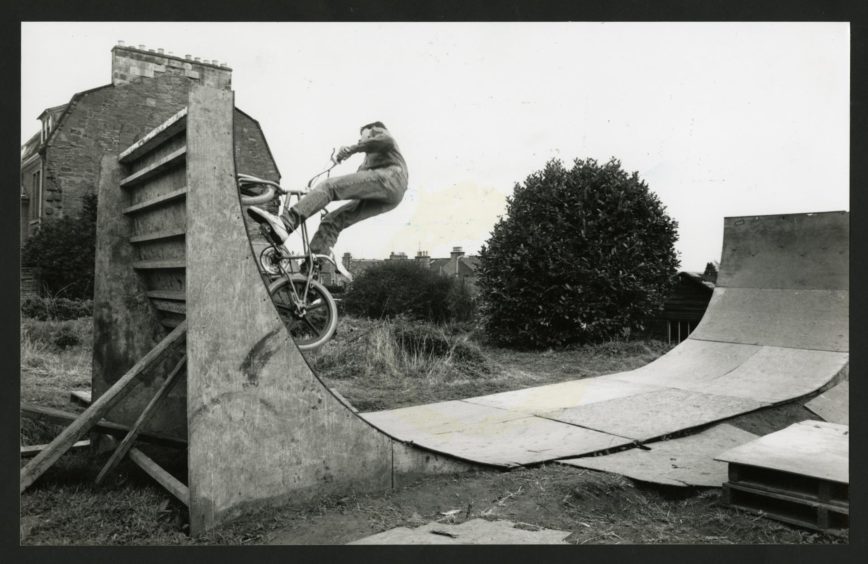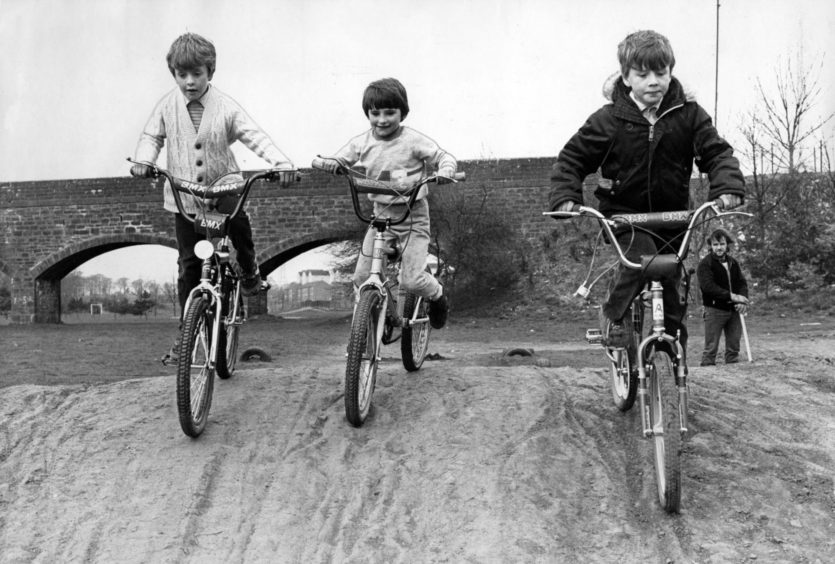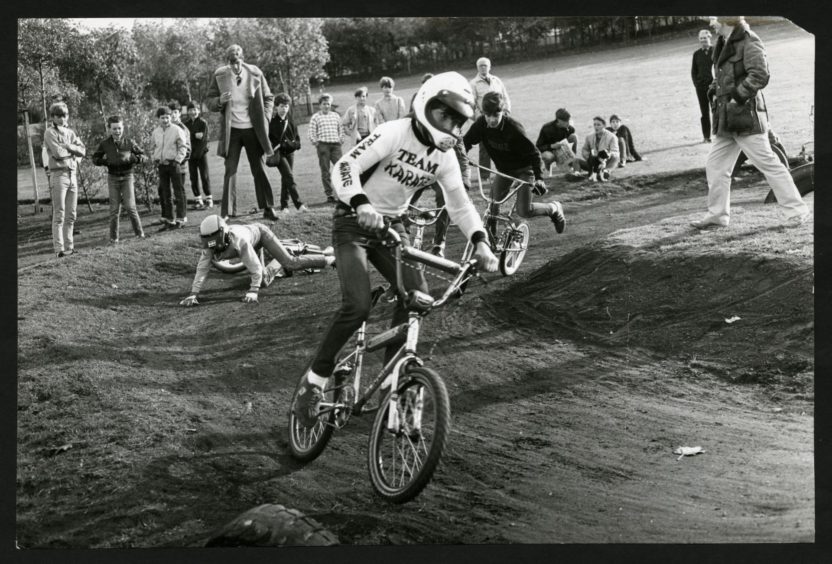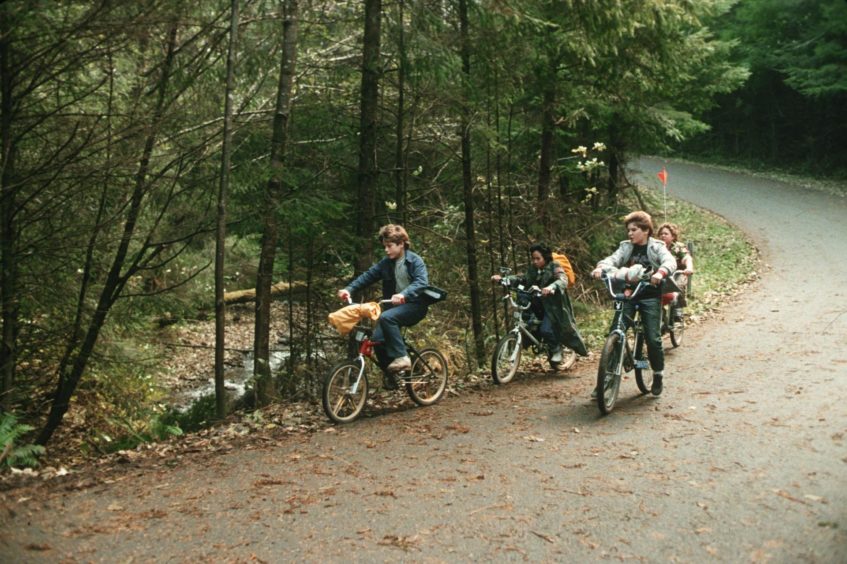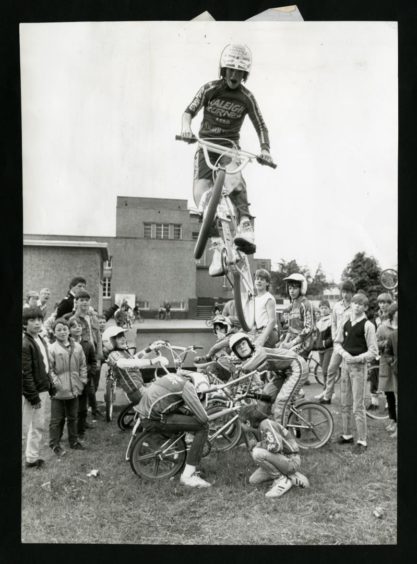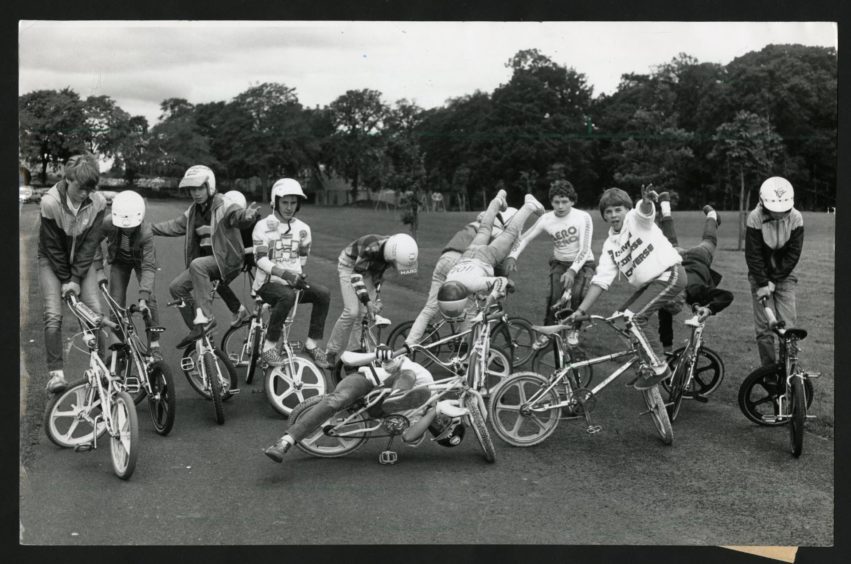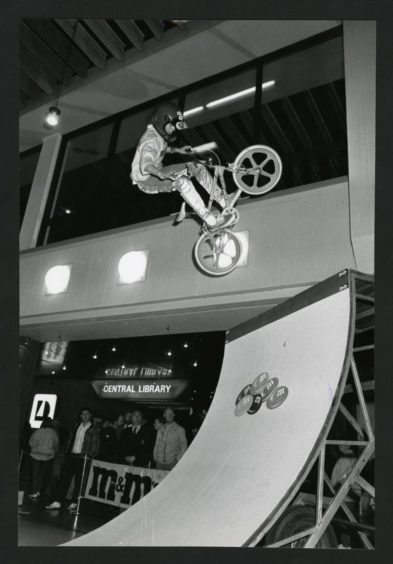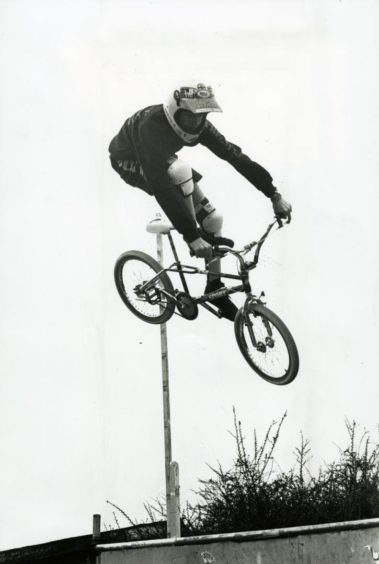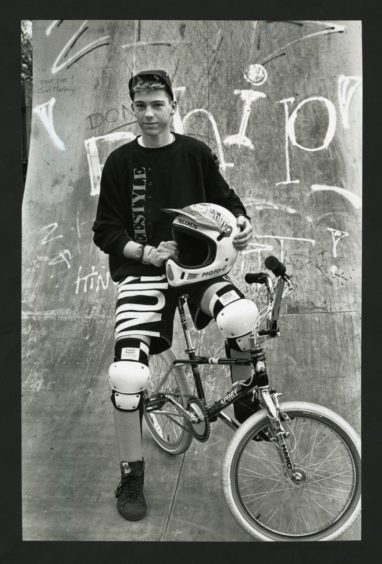Fearlessly careering off homemade ramps at speed, thrill-seeking Dundee BMX bikers led the way when the street sport phenomenon hit Scotland.
And the city even produced a teenage world champion, so-called ‘backyard biker’ Scott Carroll who found success after hours spent training in his back garden.
BMX biking started as a craze on the dusty dirt tracks of South California, but soon kids across the world were wanting a piece of the off-road action.
Designed to hurtle over jumps and crash back to earth, many a childhood scrape has been gained through thrashing BMX bikes around homemade tracks.
Inspired by their American dirt-bike heroes, children of the early 70s modified Schwinn Sting-Rays to look like motorbikes.
Jumps made of junk
But by the end of the decade, a new type of bicycle crash-landed into skate-parks around the globe – and firmly into popular culture.
Designed for speed and stunts, the 1980s BMX bicycle – short for Bike Moto Cross – was lighter, shorter and sturdier than its predecessors.
Such was the popularity of the exciting street-sport, that April 1981 saw the establishment of the International BMX Federation.
The phenomenon swept across Britain, and soon young daredevils with energy to burn were building ramps and speeding off them.
We’ve rolled back the years to take a look back at our archive photos of 80s kids tearing up the streets of Dundee on their BMX bikes.
Enterprising Dundee BMX bikers would collect scrap material and save their hard-earned pocket money to buy bits of wood for building bike jumps.
And thanks to the iconic BMX chase scene in 1982 smash-hit film E.T., the appeal of BMX racing only gained momentum.
But there was delight all round during the Easter Holidays in April 1984, when a dedicated dirt track was opened for youngsters to race their BMXs.
The track, located at Finlathen Park between the two housing estates, was built for £840 as a safer alternative to kids’ DIY efforts and featured various humps and bumps.
Back garden bikers
As similar tracks sprang up across the area, youngsters in Angus were celebrating when their petition for a proper circuit was successful.
A pilot scheme for BMX tracks at Hercules Den in Arbroath, and Forfar Leisure Centre won the backing of Angus Council in 1984.
When cult US film The Goonies was released in 1985, it only made the BMX more popular as children sought to emulate the adventurous young heroes who banded around on BMX bikes.
A little closer to home, one talented youngster was beginning to make a name for himself on the BMX circuit.
Part of the Angus Arrows BMX team, 13-year-old Scott Carroll could often be seen practising his cycle skills in his back garden at 65 Monifieth Road in Broughty Ferry.
He had unsuccessfully pleaded with Dundee City Council to build a dedicated stunt ramp, and did much of his training in his back garden.
BMX clubs would meet across the region, usually on Sundays, but sometimes on Wednesdays during the lighter summer evenings.
Dozens of youngsters from the country and city would vie for trophies and titles at meet-ups hosted by clubs like the Angus Arrows and Perth Pumas.
Success after setbacks
But in 1986, the Angus Arrows took flight and left Dundee for a track at Pitskelly Park in Carnoustie after the city council continued to refuse to build a new track.
The first race meeting at the new location in Tayside attracted more than 50 youngsters from across the region.
At the time, Arrows’ club representative Mr R McLermon said it was “unfortunate” the group had to leave Dundee, but praised the warm welcome in Carnoustie.
And despite the upheaval, the club were top of the Scots and went on to score 60 trophies across the country that year.
But Arrows teammate Scott Carroll, now aged 15, faced his own setback when his hand-built ramp in Dundee was set alight by vandals.
Scott and pal David McDonald had painstakingly built an eight-foot stunt jump on wasteland at Cross Street, before it was unceremoniously torched.
And just a few months later, in March 1987, Scott was again a victim of crime when his neon blue BMX was stolen outside Ritchie’s Cycle Shop in Broughty Ferry.
Overcoming adversity, Scott – who always had a smile on his face according to competitors – went on to take first place at every Scottish BMX competition that year, before winning the BMX World Championship.
Ramp request
Even having a world title under his belt didn’t improve Scott’s training facilities on his home turf and he feared he would need to travel as far as England to practice.
At the time, the former Grove Academy pupil said: “The sport is much more popular down there and every town seems to have permanent training facilities.
“I think it would have been as popular in Scotland if places to train had been built here at the start.
“Lots of us started out, but when the council did nothing about our requests for facilities, the others gave up.
“I enjoyed it too much to do that, though, and built ramps in the back garden.”
You can imagine Scott’s surprise when just weeks later, red-faced Dundee City Council officials approached him asking to borrow a ramp.
A party from Dundee’s twin town of Wurzburg in Germany were to visit the city for a week and wanted to take part in freestyle BMX.
But without any facilities in town, the authority turned to 16-year-old Scott for help.
Although he found the request “hard to believe” he was more than happy to help and added: “Lending the ramp is my good turn. Perhaps I’ll get one in return.”
A Dundee City Council spokesman said “it is not something we would normally have”.
Humble hero
The following year, aged just 17, Scott put on a spectacular display to win the Tizer World Championships after “outclassing” competition from America and Europe.
Although the coveted title gained Scott sponsorship from BMX manufacturer Skyway, his amateur ‘backyard biker’ status meant he was not eligible for the £500 prize money.
The young cycle ace had to make do with a cup and medal, but he had big ambitions to turn semi-professional.
Scott’s cycling stunts were starting to get him noticed – in February 1989 he visited Oman as a guest of the British Government to put on BMX displays as part of the British and Oman Festival of Friendship.
The following month, he left behind the amateur class and clinched a third BMX World Championship title in Paris, beating 30 riders from across Europe and America.
And when he wasn’t competing, the teen was also travelling the UK putting on displays and even enjoyed appearances on children’s TV shows Motormouth and John Craven’s Newsround.
But the lack of facilities continued to hinder Scott’s progress and when he turned professional in the early 90s, he moved south to continue his career as a BMX champion.
Humble Scott said that he was “lucky” to have the support of friends and family in his unusual choice of career and was never told to get a “real job”.
